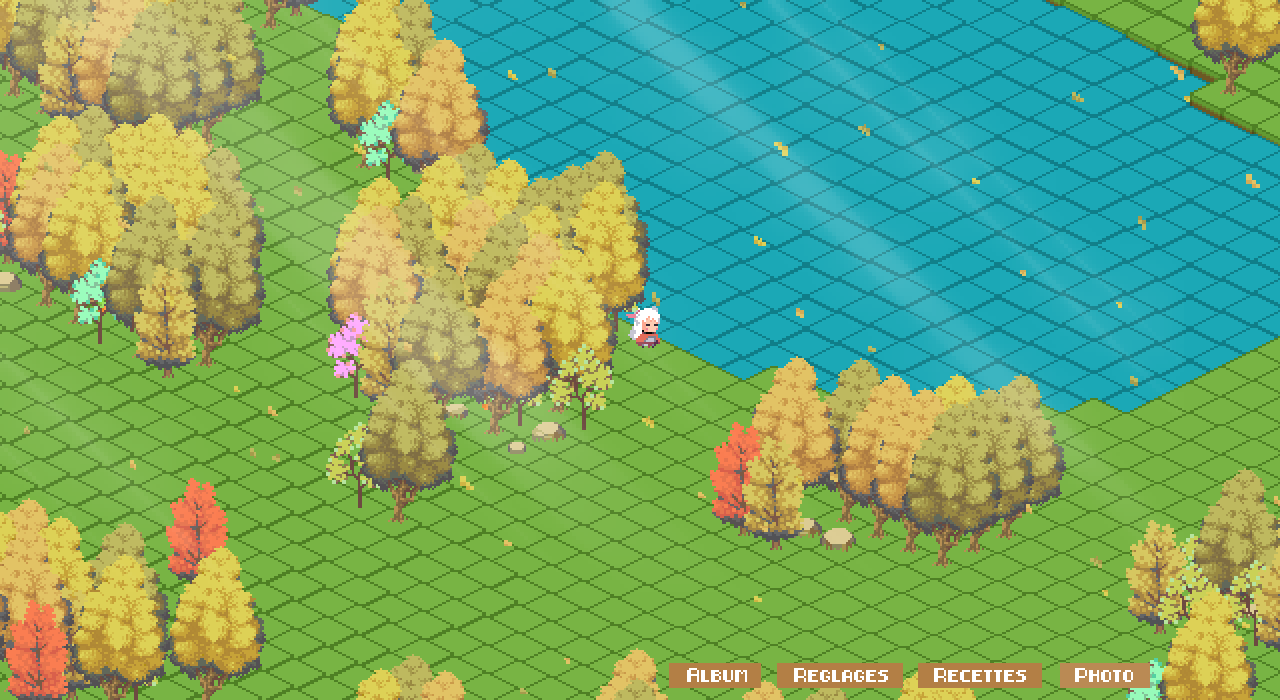About
Spicy Journey is a game that will help you relax and unwind as you explore a procedurally generated world filled with lush forests. With its isometric viewpoint and pixel art style, Spicy Journey is a retro-visual game that is sure to captivate you. Spicy Journey offers endless possibilities for exploration and discovery. No two games are the same, so you can come back to Spicy Journey again and again for a new experience. If you're looking for a game that will help you relax and unwind, look no further than Spicy Journey. With its beautiful forests, charming pixel art style, and endless exploration possibilities, it's the perfect game for anyone looking to escape into a peaceful and immersive world.
The lore
The story takes place in a fantasy world filled with magic and mystery. The character you control is a young Japanese woman named Hana, born in a small remote village nestled in a lush forest. Hana is an avid cook and has inherited her traditional Japanese recipe book from her grandmother. The ingredients she needs to cook these dishes are scattered all over the world. She decided to go on an adventure to collect and cook them in order to perpetuate the family traditions and pay tribute to her grandmother. She embarks on an incredible journey through the wilderness, discovering mystical secrets about the world around her. Along the way, Hana meets fascinating characters who help her on her quest, such as merchants who sell her useful ingredients for her recipes.How is the world generated ?
In order to create a realistic world, we chose a low frequency and a high enough amplitude to create interesting reliefs. Then we applied some simple rules: if the terrain is below the height of the water, then add water, which is animated with a simple cos.
We simply use the Simplex Noise !
Library we use : Noise (python)
Perlin Noise is a type of procedural texture generator that was invented by Ken Perlin in 1985. It is a function that generates a pseudo-random appearance, which means that the output appears to be random, but it is actually deterministic and can be easily controlled by changing its input parameters or "seed".
Perlin Noise is commonly used to generate various types of textures, such as clouds, terrain, and marble. It is also used in many video games to create realistic and dynamic landscapes, as well as in animation and movie special effects. The algorithm is based on a grid of gradient vectors that are used to interpolate between the lattice points to produce the final output.
Perlin Noise has been improved over the years, and one of the most commonly used variants is Simplex Noise, which is faster and more efficient than the original algorithm. It uses a more optimal simplex grid instead of a regular grid, resulting in smoother and more natural-looking textures.
Overall, Perlin Noise (and Simplex Noise) are powerful tools for generating realistic and varied textures for various applications, including video games, animation, and digital art.
Please watch this video :
Code source : Github
- Inspirations
- World
